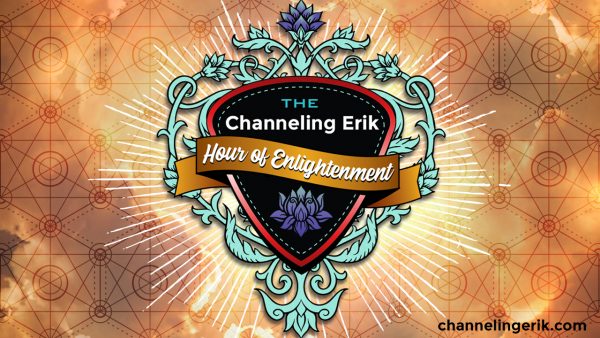I’m going to keep this short since it’s a holiday weekend, and it’s not like I have much of anything intelligent to say, so please enjoy this interview with Andrea Elliott, author of the excellent book, Light Me Up.
Also, enjoy this article, Continuing Bonds with a Deceased Child. I completely forgot who the author is, and she didn’t put it at the end of the Word Document, but if she sees this and let’s me know, I’ll add it. She deserves the credit!
Continuing Bonds With A Deceased Child
The bond between a parent and a child is like no other. From the moment a baby enters the world, touch, eye-to-eye contact, and verbal communication all help to cement the bond between parent and child. When a child sadly passes away, many parents think it’s the end of the bonding process. However, there is plenty of evidence to support the theory that bonding with your child in the afterlife should and can be done.
Continuing bonds
Up until the 20th century, it was normal practice for loved ones to continue their bond with the deceased. However, Sigmund Freud heavily influenced the movement that deterred this ritual and individuals were encouraged to ‘get over’ the death of a loved one by emotionally detaching themselves from the person. While this notion is still held by some, it has become more socially acceptable to continue bonds with the dead. After all, a child makes a parent the person that they are today, as does their death. What’s more, the parent-child relationship is consistently viewed as one of the most important in the world. So, it’s only natural to continue this bond.
Consciousness lives on
Scientists are yet to decipher exactly what consciousness is. However, researcher Stuart Hameroff and physicist Sir Roger Penrose’s theory is that consciousness can be explained by the information that’s stored at a quantum level. The pair describe their theory as the “orchestrated objective reduction,” or Orch-OR and state that protein-based microtubules carry quantum information. When a person dies, the information dematerializes but doesn’t cease to exist. As a result, the person’s soul is contactable in the afterlife, thus giving bereaved parents the opportunity to reach out to their child and to continue to build the life-long bond that exists between them.
Locating the deceased
In order to truly cement a bond with a deceased individual, it’s crucial that they’re location is determined. Psychic Medium Matt Fraser points out that while there is a place called Heaven, it is not a separate place. Instead, the parent looking to locate a lost child must acknowledge that said child is always with them. Actively looking for clues that the child is around them is essential too. Objects, shapes, numbers, and symbols which are closely associated with the child can be one of the first clues, as is simply feeling the child’s presence and dreaming about them. But that’s not to say that parents who don’t experience these factors aren’t connected with their deceased child. Parents in this position should, instead, ask the child to show them a sign that they are there with them to facilitate the bonding process. Psychic Medium and Intuitive Coach Danyelle Simone advises that on some days it can be easier to contact the deceased than on others, so parents should never give up reaching out to their child.
Visiting the grave
Many parents find that visiting their child’s grave provides them with the opportunity to talk openly and freely with their child. This is because having a set place to go which is also their child’s final resting place brings a sense of comfort, as well as reassurance that the child is there and listening to their every word. But parents needn’t worry if they physically can’t get to their child’s graveside or find it difficult to be there. When contacted about the importance of visiting the deceased’s grave, Danyelle Simone advised that “You do not have to be at a gravesite to communicate with anyone. Simply thinking of the person and talking to them is fine and effective. They do not seem to be bound to a specific place on earth.”
Perform personal mourning rituals
As the presence of a deceased child is always around its parents, personal mourning rituals can help to grow the bond between them. In their research, Norton and Gino induced grief in participants and got half of them to write about a ritual they had done with a now-deceased individual. The researchers found that the group who wrote about their rituals were less sad and had less grief than the non-ritual group. Parents should, therefore, look to routinely carry out the personal rituals that they did with their child when they were alive. For example, when cleaning a child’s bottle – as many parents do to fend off germs and bacteria – they may have put on their child’s favorite lullabies to sing them to sleep at the same time. Parents can, therefore, create a peaceful and satisfying bonding experience by emulating this ritual at the same time every day.
Continuing bonds via social media
One of the newest methods parents can use to continue their bond with their child is via social media. 30 million Facebook users are believed to have passed away within the first eight years of the site’s creation. A 2015 study titled Mourning 2.0—Continuing Bonds Between the Living and the Dead on Facebook revealed that across just 12 Facebook accounts, 1270 individual messages were posted to the dead. These posts were categorized under several different categories, including “messages and visitations from the deceased,” and “conversations with the deceased”. This led the researchers to conclude that social media was an effective tool in continuing a bond with someone who has passed to the other side. Sadly, this method isn’t suitable for every grieving parent as the majority of social media sites have a minimum age restriction of 13 years of age. But with Tech Crunch reporting that there are 2.5 billion active Facebook users worldwide, there is plenty of scope for social media to become a successful tool for continuing a bond with a deceased child.
Losing a child is one of the hardest losses to deal with. This is because parents feel that their time with their offspring has been prematurely cut short. But parents needn’t feel that the death of their child is the end of their relationship with them as the conscious lives on and continuing bonds is achievable when they know how.
Important links:
Blog: https://channelingerik.com
Watch our Tuesday night Radio show: http://www.blogtalkradio.com/hour-of-enlightenment
PLEASE click LIKE on our Facebook page: https://www.facebook.com/ChannelingErik
PLEASE follow me on Instagram: https://www.instagram.com/channeling_erik
PLEASE subscribe to my YouTube channel: https://www.youtube.com/c/ChannelingErik2121
PLEASE follow me on Twitter: https://twitter.com/CHANNELINGERIK
Featured image courtesy of Pinterest.



